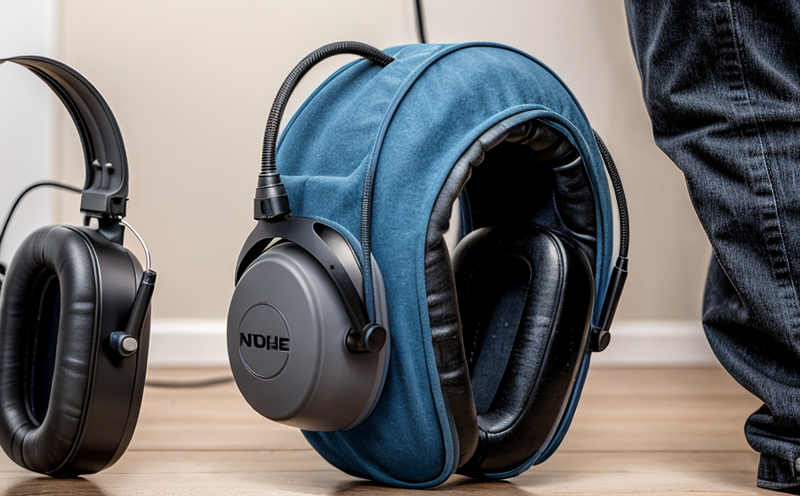ASTM F2962 Noise Isolation Headset Testing
The ASTM F2962 standard specifies the test methods to determine the noise isolation performance of headsets. This testing is critical for ensuring that hearing protection devices (HPDs) effectively reduce ambient noise, thereby protecting workers from hazardous sound levels. The test involves placing a specified type of HPD on a human-shaped anthropomorphic phantom and measuring the noise reduction between two reference points: one without the headset and one with it in place.
The ASTM F2962 standard is widely recognized for its rigorous approach to evaluating noise isolation performance, which helps manufacturers ensure that their headsets meet or exceed safety standards. This testing is particularly important in sectors such as manufacturing, construction, and mining where workers are exposed to high levels of noise.
The test setup typically involves an anechoic chamber designed to minimize sound reflections, ensuring accurate measurements. The phantom used for the test simulates a human head and torso, allowing for precise placement of the headset. The testing process is conducted in accordance with internationally recognized standards such as ISO 1999-2.
The ASTM F2962 standard requires that the noise isolation performance be measured under controlled conditions to ensure consistency and repeatability. This includes specifying the type of sound source, the frequency range of the test, and the environmental conditions in which the testing is conducted. The acceptance criteria for this test are stringent, ensuring that only headsets with proven noise reduction capabilities can pass.
The importance of this testing cannot be overstated. By ensuring that headsets meet or exceed the required noise isolation performance, employers can help prevent hearing loss and other auditory issues among their workforce. This not only enhances worker safety but also contributes to a healthier work environment.
Additionally, compliance with ASTM F2962 is essential for manufacturers looking to comply with regulatory requirements. Many industries have specific guidelines that mandate the use of headsets with proven noise isolation performance, and failure to meet these standards could result in fines or legal action.
Scope and Methodology
| Test Parameter | Description |
|---|---|
| Noise Source | The noise source used in the testing must comply with ISO 1999-2. |
| Phantom Head | The phantom head is designed to simulate a human head and torso. |
| Test Environment | The testing must be conducted in an anechoic chamber to minimize sound reflections. |
| Acceptance Criteria | Description |
|---|---|
| Noise Reduction Value | The noise reduction value must meet or exceed the specified standard. |
| Repeatability | The results of the test must be repeatable within a ±1 dB margin. |
Why Choose This Test
Selecting ASTM F2962 for noise isolation headset testing offers several advantages. Firstly, the test ensures that headsets perform reliably in real-world conditions, providing workers with effective protection against hazardous noise levels. Secondly, compliance with this standard is crucial for meeting regulatory requirements and avoiding potential legal issues.
Manufacturers who undergo ASTM F2962 testing can enhance their reputation by demonstrating a commitment to worker safety and well-being. This not only builds trust with customers but also helps in attracting and retaining top talent. Additionally, successful completion of this test can lead to increased sales and market share.
The rigorous nature of the ASTM F2962 standard ensures that headsets meet or exceed industry expectations for noise isolation performance. This can be particularly beneficial in highly regulated industries where safety is paramount. By choosing this test, companies can ensure that their products are among the best in the market, setting a benchmark for others to follow.
Furthermore, ASTM F2962 testing provides valuable data that can inform product development and improvement efforts. This data helps manufacturers identify areas for enhancement and innovation, ultimately leading to better-performing headsets.
Customer Impact and Satisfaction
- Ensures worker safety by effectively reducing hazardous noise levels.
- Avoids potential legal issues related to non-compliance with regulatory standards.
- Increases customer trust through proven compliance and reliability.
- Promotes a healthier work environment, enhancing overall productivity.





